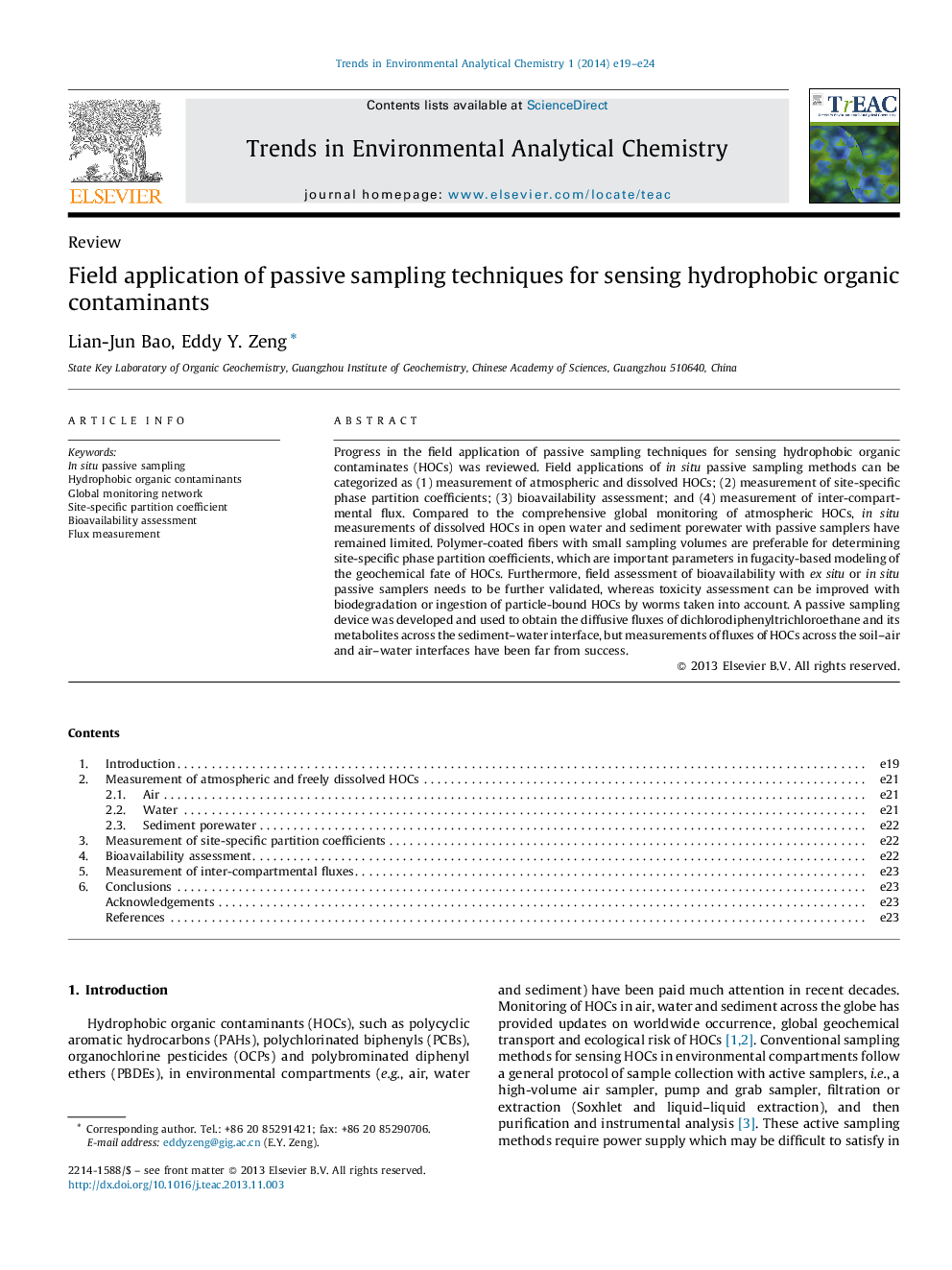| Article ID | Journal | Published Year | Pages | File Type |
|---|---|---|---|---|
| 7690454 | Trends in Environmental Analytical Chemistry | 2014 | 6 Pages |
Abstract
Progress in the field application of passive sampling techniques for sensing hydrophobic organic contaminates (HOCs) was reviewed. Field applications of in situ passive sampling methods can be categorized as (1) measurement of atmospheric and dissolved HOCs; (2) measurement of site-specific phase partition coefficients; (3) bioavailability assessment; and (4) measurement of inter-compartmental flux. Compared to the comprehensive global monitoring of atmospheric HOCs, in situ measurements of dissolved HOCs in open water and sediment porewater with passive samplers have remained limited. Polymer-coated fibers with small sampling volumes are preferable for determining site-specific phase partition coefficients, which are important parameters in fugacity-based modeling of the geochemical fate of HOCs. Furthermore, field assessment of bioavailability with ex situ or in situ passive samplers needs to be further validated, whereas toxicity assessment can be improved with biodegradation or ingestion of particle-bound HOCs by worms taken into account. A passive sampling device was developed and used to obtain the diffusive fluxes of dichlorodiphenyltrichloroethane and its metabolites across the sediment-water interface, but measurements of fluxes of HOCs across the soil-air and air-water interfaces have been far from success.
Related Topics
Physical Sciences and Engineering
Chemistry
Analytical Chemistry
Authors
Lian-Jun Bao, Eddy Y. Zeng,
